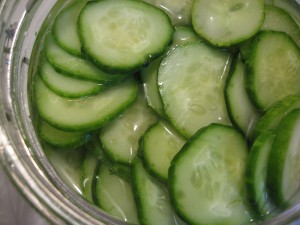 Salt comes in many forms and has many uses. How many are you aware of?
Salt comes in many forms and has many uses. How many are you aware of?
One of the most common features of a set table is the salt shaker sitting neatly next to the pepper grinder. Saltiness is not only one of the basic tastes next to sweetness, bitterness and sourness, it is also one of the oldest forms of seasoning. From simple table salt to the mineral-rich salt of the shrinking Dead Sea, there are many forms of salt available.
Beyond existing in various forms, salt also has a multitude of uses in the kitchen, which exceed simply seasoning food. There are several tricks in regard to using, as well as removing salt, that can be handy in day to day life.
1. How many times have you accidentally slipped, pouring too much salt into a soup or stew? By putting a raw peeled potato into the stew or soup, you can remove some of that extra salt. As the potato boils, it absorbs the salt from the water, taking away the overriding saltiness of the food. Of course you can always repeat the procedure if you have had a major over-salting accident.
2. When it comes to meat however, the best solution is to soak the meat in water prior to cooking. Cured meat is often very salty, so letting the meat stand in water overnight is a great trick.
3. Adding salt to vegetables is relatively common, whether it is in salads or in cooking. The reason for this is that salt subtly enhances the natural flavours of the vegetables. If you are boiling any kind of green vegetable, you can add a fair amount of salt without having to worry about salt absorption. Green vegetables contain a great deal of water, so they will not absorb much of the salty water they are boiled in, just enough to taste great.
4. If you want to boil water at a higher temperature salt can be handy. It doesn’t make the water boil faster, but it does make the water boil at a higher temperature. Keep in mind that the difference in temperature will vary depending on how much salt you add.
5. Salt is also useful in desserts in small quantities. Adding just a pinch of salt to cream and egg whites makes them whip faster, higher and better. It will give you that really stiff quality that is necessary in so many desserts, without impacting the flavour.
6. Another useful trick is to add just a touch of salt to garlic before you crush it. Making garlic into a nice smooth paste before adding it to your cooking means that nobody will find themselves biting into a piece of garlic. Instead the flavour will be evenly spread throughout the dish. Adding salt allows you to make a nice smooth paste very easily.
Despite the many health issues surrounding salt, it is an extremely valuable tool in the kitchen. This simple spice is extremely versatile, so why not try a pinch?
Read more about spices and herbs:
Cloves In and Out of the Kitchen
PART I: The ABCs of Traditional Middle-Eastern Spice Medicines (A through C)
Herbal Teas – A Natural Way to Cure What Ails You




